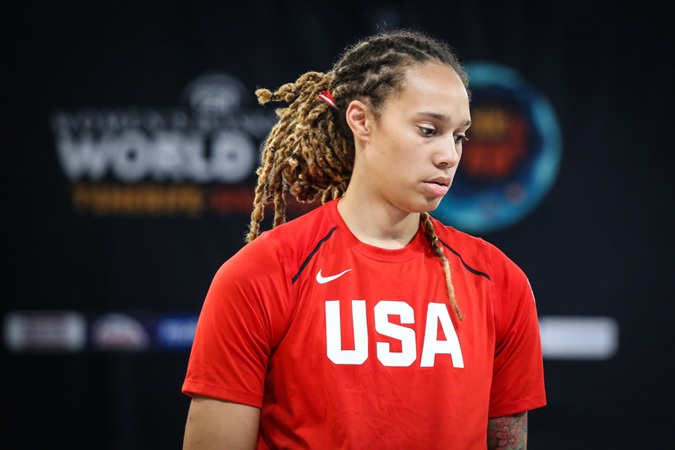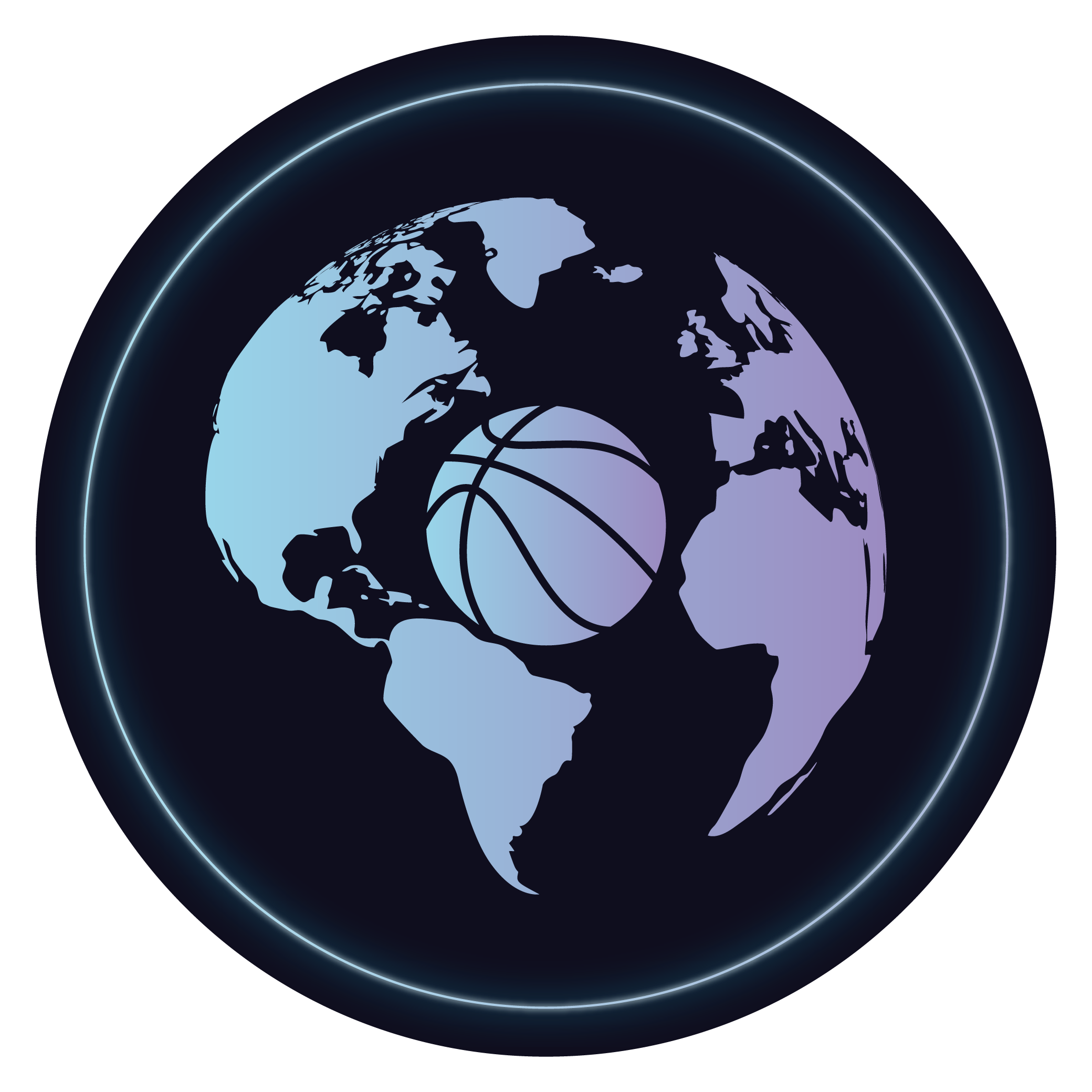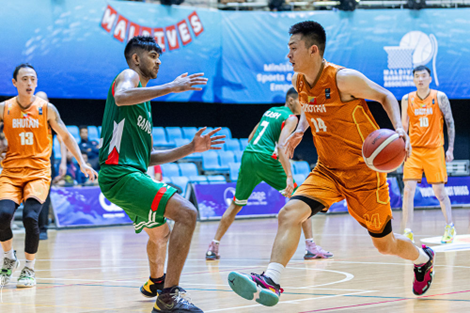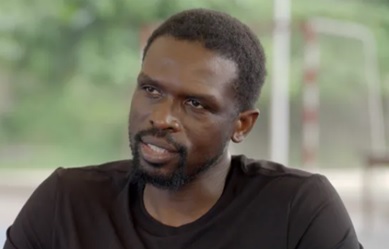
The WNBA players’ union leader, Nneka Ogwumike, explained that basketball star, Brittney Griner, has been held in Russia since February due to salary disparities. “The reality is, she’s over there because of a gender issue,” Ogwumike explained in an interview with ABC’s Good Morning America on Tuesday.
She pointed out that Griner’s primary reason for going to Russia in the first place was the money. “We go over there to increase our incomes and, quite truthfully, we go over there to sustain our game,” Ogwumike stated.
There has always been a wage discrepancy between the genders in America. In 2020, women’s yearly earnings in the United States amounted to barely 82.3% of men’s wages. But this difference is most noticeable in the WNBA.
In This Week’s WNBA Draft, the Gap Was Evident
This week’s WNBA draft provided the most recent reminder of the compensation disparity. The Atlanta Dream chose University of Kentucky standout Rhyne Howard as their number one choice. The rookie pay structure for the league, which stipulates that the first four choices in this year’s draft would earn three-year contracts for $226,668, will be applied to the shooting guard’s compensation.
Therefore, Howard will earn an average base salary of $75,556 throughout her first three seasons.
Although the NBA Draft 2022 is scheduled in June, the Detroit Pistons picked Oklahoma State’s Cade Cunningham as their first overall choice in the previous round. According to player contract tracking website Spotrac, Cunningham inked a $45.6 million, four-year deal with the Pistons, with an average salary of $11.4 million yearly.
Put another way, Cunningham made 150 times more money as a rookie in the NBA than Howard did in the WNBA.
This disparity exists beyond the novice players as well. Only some of the highest-paid players in the WNBA are earning vast amounts of money. Based on Spotrac data, just 14 players in the league earn $200,000 or more. According to reports, Diana Taurasi of the Phoenix Mercury and Jewell Lloyd and Breanna Stewart of the Seattle Storm earn the highest salaries, at $228,094 each.
Between the NBA and WNBA, There Is a Significant Revenue Disparity
The significant income disparity between the two leagues is a major contributing cause of the existing salary discrepancy. This is partially due to the NBA’s 51-year advantage over the WNBA, which began playing in 1997, and partially because there isn’t a women’s league, while the NBA has become a massive worldwide marketing powerhouse, reaping enormous rewards. The WNBA has endured for 25 years with the help of the NBA, whereas many other women’s sports leagues have dissolved.
NBA Commissioner Adam Silver estimated that earnings for the 2019–2020 season will reach $10 billion, up from $8.3 billion during the season on which COVID-19 had a significant impact.
The WNBA does not disclose its total income statistics. According to sports economist David Berri, the company brought over $70 million in revenue in 2019. In 2018, Silver informed The Associated Press that the WNBA was losing $10 million annually.
Players in the WNBA have always received far less money than their NBA counterparts, even with the league making some money. According to the NBA’s collective bargaining agreement, players and owners divide basketball-related revenue around 50/50. In the past, WNBA players had demanded a more significant cut of league earnings, and the current collective bargaining agreement for 2020 guaranteed a 50/50 split if the league met specific development goals. However, the club has yet to reveal those objectives and, as of October of last year, those revenue-sharing contracts had not been activated.
To Supplement Their Income, WNBA Players Travel Abroad
For years, the wage situation has forced players to travel abroad.
Australian hoopster Liz Cambage claims that her earnings in foreign competitions are five to eight times more than in the WNBA. The harsh realities of the economy have forced her to forgo five WNBA seasons in favor of more lucrative chances abroad.
“It’s hard when you have ‘the best league in the world’, but we’re not treated like the best athletes in the world,” Cambage stated to ESPN in February.
She said that, even though she is six-foot-eight and cannot fit into coach seats on an airplane, her club, the Los Angeles Sparks, cannot afford to fly her to games in first class because of the existing collective bargaining agreement between players and the league: “I find it absurd that, to come to work and perform, I have to pay to upgrade my trip. I want the upper limit on maximum salaries to be somewhat relaxed.”
In addition to the WNBA, Ogwumike, the head of the players’ union, has played in China, Poland, and Russia. If athletes work part-time overseas, they are treated well, she claims, “but we don’t want to feel as though we have to go over there to get what we want at home.”
Griner performs for UMMC Ekaterinburg in Russia, owned by an Uzbekistan-born oligarch with connections to Russian President Vladimir Putin.
CULTURE
What Brittney Griner was doing in Russia and how it relates to women’s basketball in the United States
Although Diana Taurasi was compensated by the franchise to sit out for the 2015 WNBA season, how much Griner was paid at Ekaterinburg is still being determined. “That is what I do for a living. Why shouldn’t I make an effort to maximize my earnings?” Taurasi said to The New York Times.
Her Ekaterinburg colleague, Candace Parker, concurred. “Although the WNBA is our off-season, this is our season. People see it that way. You look after your family here,” she informed The New York Times.
For overindulging its players, one team was penalized. This recent incident demonstrates the difference between the NBA and the WNBA.
According to Sports Illustrated, New York Liberty owner Joe Tsai recently found himself in deep water with the league for giving the club charter planes for the second half of the season and sending its players on a relaxing trip to Napa Valley during Labor Day weekend.
Tsai is a co-founder of Alibaba, a massive Chinese e-commerce company. He also owns the Brooklyn Nets of the NBA.
“We have incredible ownership.” About the trip to Napa, athlete Jazmine Jones told reporters, “They treat us just like they treat the NBA team. It was a great experience, and I’m super grateful for them.”
However, the Napa trip and the NBA’s standard charter flights were outside the terms of the players’ collective bargaining agreement with the league. According to Sports Illustrated, the Liberty were threatened with losing draft selections and maybe the franchise due to the offenses. The WNBA ultimately penalized the club with a fine of $500,000.
An Effort to Improve WNBA Wages and Working Conditions
A movement is underway to appropriately reward female athletes and acknowledge the lucrative potential of women’s sports.
As part of a settlement over the team’s equal pay complaint, U.S. Soccer agreed to pay $22 million in back pay to U.S. women’s national soccer players in February.
SPORTS
The U.S. National Women’s Soccer Team Won the $24M Equal Pay Settlement
The NCAA agreed to make certain modifications and initiated an inquiry into the discrepancies in facilities used for the men’s and women’s NCAA basketball championships following a public outcry one year earlier. As The Wall Street Journal noted, one of those adjustments is that the women’s competition may now utilize the “March Madness” moniker, which was previously only permitted for the men’s competition.
The WNBA is under more scrutiny due to the dispute over charter flights.
Liberty player Sabrina Ionescu tweeted, “What a joke”, in response to the league fining the team.
The incident appears to prove that the two-year-old collective bargaining agreement may require more adjustment, according to many players, fans, and some of the league’s most recent owners.
After all, even the new contract stipulates that the WNBA minimum base pay for players with fewer than two years in the league is just $60,471, while minimum compensation for players with three or more years in the league is at least $72,141.
With pay like that, WNBA players will be continuing their international travels for the foreseeable future.
The WNBA claims to have been striving to expand player possibilities to provide each player with other options outside of playing overseas during the offseason. Examples of these changes include coaching internships and internships with different firms. As a result, fewer players are heading overseas this offseason—70 out of 144 players, which is down from the 89 that went abroad five years ago, according to the league.
In addition, the league is going to start penalizing players who miss the start of the WNBA season due to playing overseas. Players who miss any day of training camp will be penalized 1% of their base salary starting in 2023. If they don’t report by the start of the season, they will be banned without pay.



